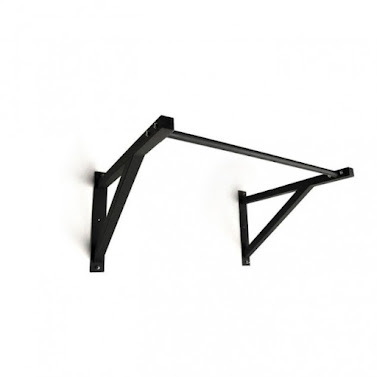Tips for beginners on using a pull-up bar for effective workouts
It is a unique effect for beginners to engage in a quality exercise and build strength in the upper body by using a pul lup bar. To help you get started, we've put together a few facts about this unique exercise tool:
1. Start with proper form: The key to equipping for any exercise is to master the proper form beforehand. Place your hands on the bar with your palms facing away, shoulder-width apart. Keep your arms fully extended and engage your core muscles.
2. Begin with assisted pull-ups: It is best to start with assisted versions if just starting the pull-up bar exercise. To support athletes' weight, use a resistance band or an administered pull-up tool. One can avoid injuries and steadily increase their strength while working out.
3. Focus on the negative phase: Strength can be strengthened by lowering yourself during the unfavourable portion of a pull-up. To get to the ultimate position, jump or apply a chair. Then, carefully decrease down, fighting earnestly as much as you can. Before risking full pull-ups, perform a few reps of this negative phase.
4. Use proper breathing techniques: During pull-up workouts, proper breathing is essential. Take a breath in as you squat and a breath out as you stand up. It aids in core stability and gives athletes' muscles the necessary oxygen.
5. Gradually increase repetitions: If you are starting new, it is vital to begin with a few number of reps. Set up for 4 to 6 sets of 6 to 9 reps at the start and work your way up to better reps as you create strength and perseverance.
6. Incorporate different grip variations: Pull-ups are performed with different grip positions, such as
- Wide grip
- Close grip
- Neutral grip.
Each grip concentrates on certain forces in your upper body, giving athletes a full range of exercise. To test muscles in various ways, experiment with diverse grips.
7. Engage your core: Not only do workout tools involve your upper body, but they even involve the core. To get the favourable out of each workout,
- Ensure your core stays tight
- Engaged during the pull-up.
It helps keep the body stable and prevents athletes from swinging or gaining momentum.
8. The same goes for relaxing after each workout: When exercised, your body needs time to relax and heal. Allowing at least two days to relax and assist you in avoiding overtraining. Your muscles will have a period to heal and get strengthened as a result.
9. Incorporate other exercises: While pull-up exercise bars are a great upper-body workout,
- It is vital to incorporate other movements into your regimen
- It develops different muscle types.
To create a comprehensive exercise regimen with the pull-up, you need to include
- Push-ups
- Rows
- Shoulder presses as part of your routine.
These will aid in the protection of muscle inequalities and enhance general energy.
10. Stay consistent and track progress: When it comes to seeing results, focus is essential. Make pulling up a regular exercise and monitor your progress a few times. Keep notes of each rep, set, and any changes you attempt. You can utilise this to keep yourself motivated and to measure each progress.
Remember
Don't forget, that it can be challenging to use a pull-up bar at the beginning, but practice and hard work are going to make each workout progressively stronger and improve your performance. Listen to your body, start gradually and don't let anything get you discouraged by the initial difficulties. There are two different approaches you need to add up while engaging in this workout tool which include
- To stay consistent
- To stay focused
These two facts will help you enjoy the journey of becoming stronger with pull-ups!




Comments
Post a Comment